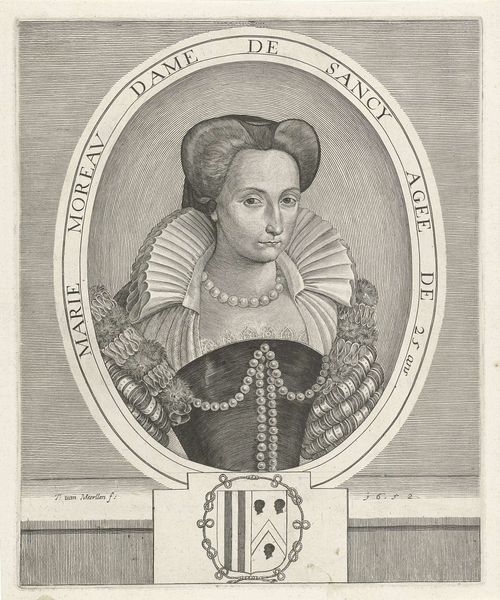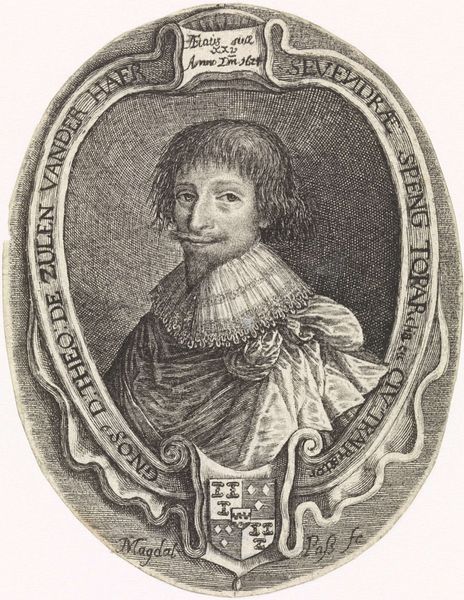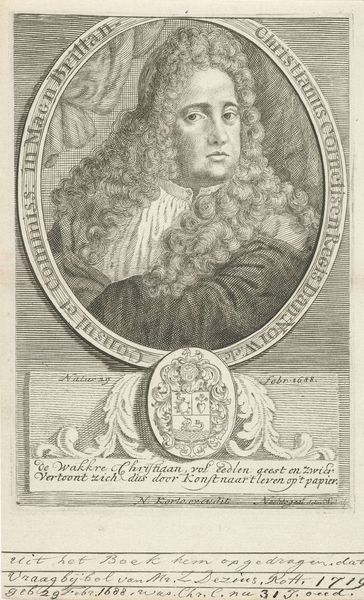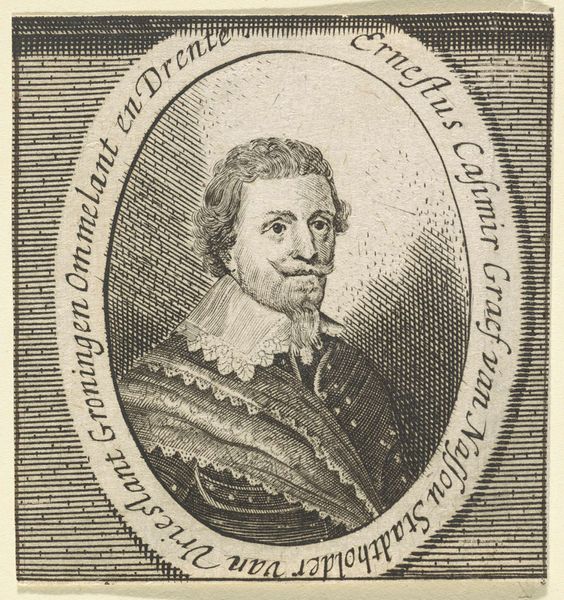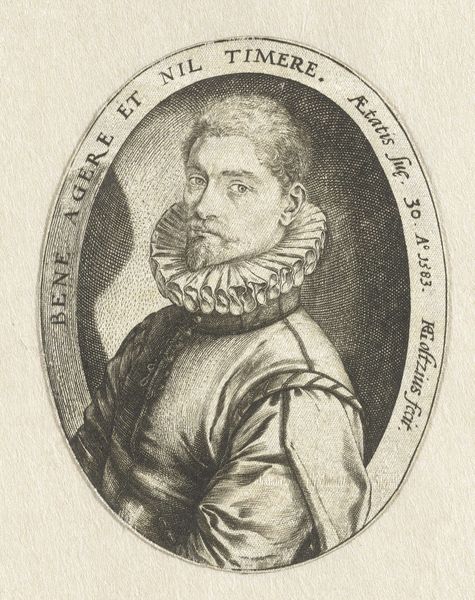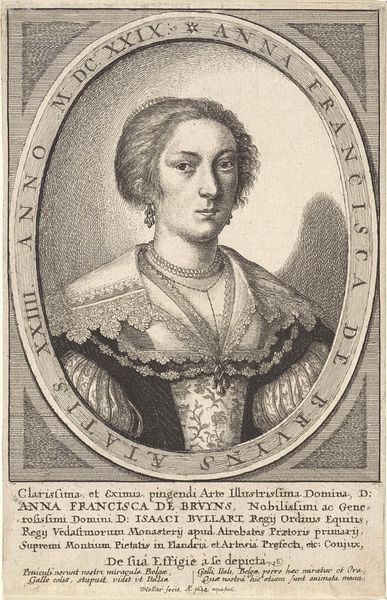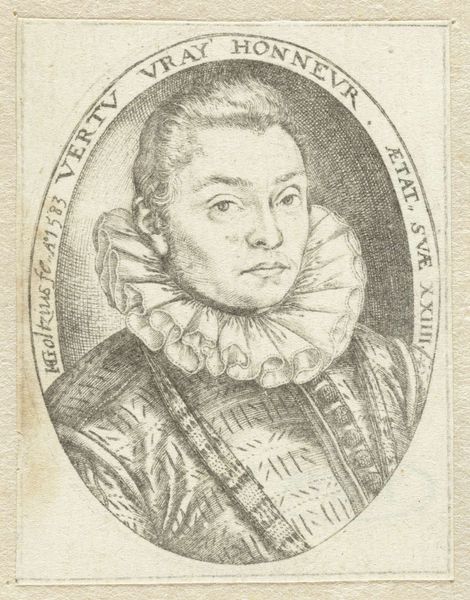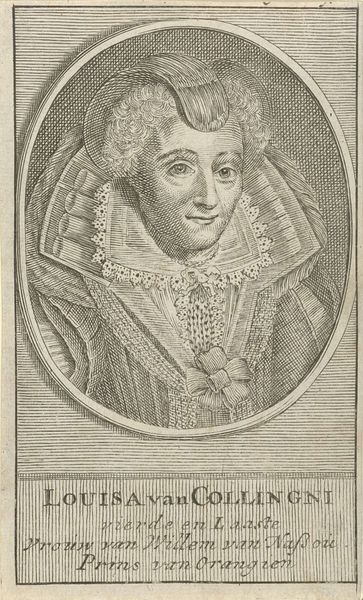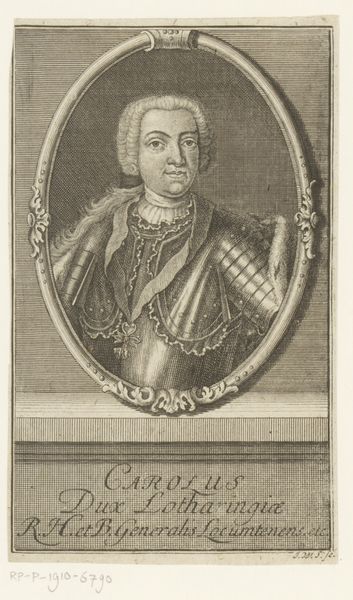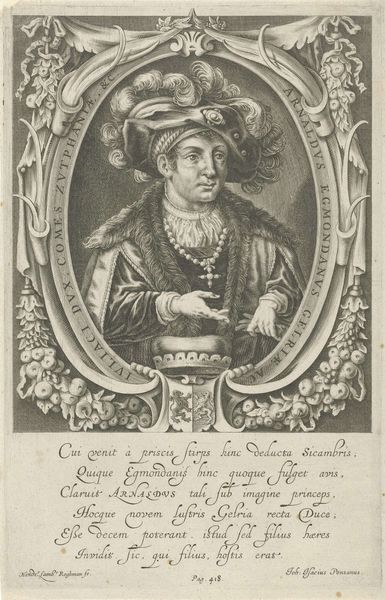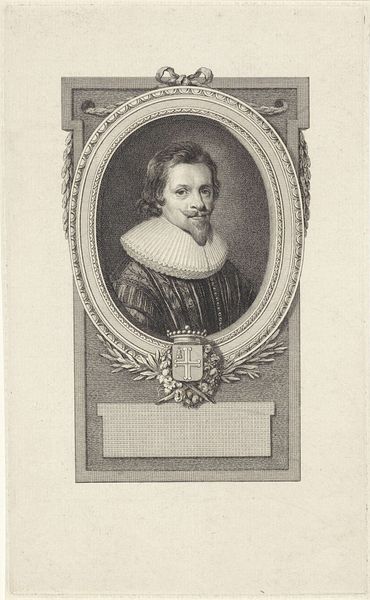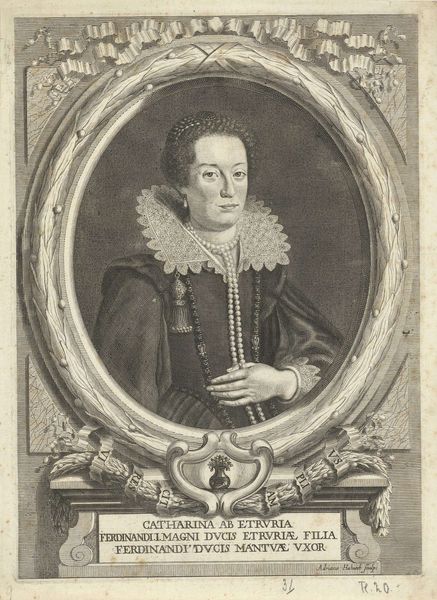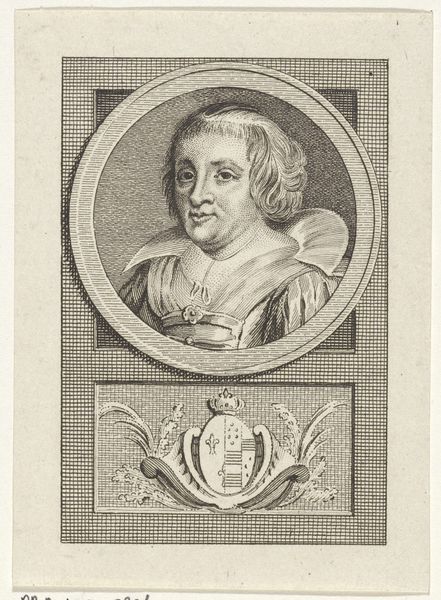
drawing, print, engraving
#
portrait
#
drawing
#
baroque
# print
#
old engraving style
#
historical photography
#
history-painting
#
engraving
#
historical font
Dimensions: height 182 mm, width 127 mm
Copyright: Rijks Museum: Open Domain
Editor: Here we have "Portret van Karel II, als jongen," a portrait of Charles II as a young boy. It’s an engraving by Cornelis van Dalen I, dating sometime between 1630 and 1665. It's interesting to see such formal attire on someone so young. What can you tell me about the context of this piece? Curator: Well, portraits like this were carefully constructed performances of power. The details - his lace collar, feathered hat, even the Latin inscriptions - all work to communicate Charles's status as the heir. Consider this: who was this image *for*? How might it have been used to bolster his claim to the throne, especially given the political turmoil of the time? Editor: It’s almost like propaganda, but in a more subtle, artistic form. The lettering surrounding him – it almost boxes him in, while it praises him. I'm curious, were images like these common? Curator: Exactly. Printmaking allowed for wider distribution, so this image would have circulated among those invested in or impacted by the monarchy. Think about the power dynamics inherent in visual representation, especially during a time of shifting political landscapes. This wasn’t just about documenting appearance, it was about constructing a carefully curated image of authority and legitimacy. Editor: So it’s not just a portrait, it’s a political statement about lineage and authority. Curator: Precisely! Understanding the socio-political context allows us to deconstruct these historical images. This work reflects an era where image-making was deeply entwined with power structures, revealing insights into societal expectations and political maneuvering. How might this contrast to modern portraits of royalty, for instance? Editor: That's a helpful point, framing it in its political context changes my perception. I hadn't considered the active role the image played during that period. Thanks! Curator: Indeed. Considering its political roots helps us understand the historical stakes present in every image.
Comments
No comments
Be the first to comment and join the conversation on the ultimate creative platform.
